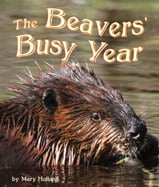Alignment to Standards for MD

| Grade | Number | Standard |
|---|---|---|
| 1 | SC-1.3.0.A.1. | Compare and explain how external features of plants and animals help them survive in different environments. |
| 1 | SC-1.3.0.A.1.c | an organisms external features contribute to its ability to survive in an environment. |
| 1 | SC-1.3.0.B.2. | Provide evidence that all organisms are made of parts that help them carry out the basic functions of life. |
| 1 | SC-1.3.0.B.2.a | humans and other animals have different body parts used to seek, find, and take in food. |
| 1 | SC-1.3.0.E.1. | Describe some of the ways in which animals depend on plants and on each other. |
| 1 | SC-1.3.0.E.1.a | Examine organisms in a wide variety of environments to gather information on how animals satisfy their need for food. |
| 1 | SS-1.3.0.B.1. | Describe places in the environment using geographic characteristics |
| 1 | SS-1.3.0.B.1.a | Identify and describe physical characteristics of a place (physical features, climate, vegetation and animal life) |
| 2 | SC-2.2.0.A.1.d | Changes caused by humans and other animals |
| 2 | SC-2.3.0.F.1. | Explain that organisms can grow and survive in many very different habitats. |
| 2 | SC-2.3.0.F.1.a | Investigate a variety of familiar and unfamiliar habitats and describe how animals and plants found there maintain their lives and survive to reproduce. |
| 2 | SC-2.3.0.F.1.b | Explain that organisms live in habitats that provide their basic needs: Food, Water, Air, Shelter |
| 2 | SC-2.3.0.F.1.c | Explain that animals and plants sometimes cause changes in their environments. |
| 2 | SS-2.3.0.B.1. | Classify places and regions in an environment using geographic characteristics |
| 2 | SS-2.3.0.B.1.b | Describe and classify regions using climate, vegetation, animal life, and natural/physical features |
| 4 | SC-4.3.0.D.1.a | Describe ways in which organisms in one habitat differ from those in another habitat and consider how these differences help them survive and reproduce. |
| 4 | SC-4.3.0.D.1.b | Explain that the characteristics of an organism affect its ability to survive and reproduce. |
| 4 | SC-4.3.0.F.1.a | Explain ways that individuals and groups of organisms interact with each other and their environment. |
| 4 | SC-4.3.0.F.1b | Identify and describe the interactions of organisms present in a habitat: Competition for space, food, and water |
| 4 | SC-4.3.0.F.1c | Identify and describe the interactions of organisms present in a habitat: Beneficial interactions: nesting, pollination, seed dispersal, oysters filtering as in the Chesapeake Bay, etc. |
| 5 | SC-5.3.0.A.1. | Explain the idea that in any particular environment, some kinds of plants and animals survive well, some less well, and some cannot survive at all. |
| 5 | SC-5.3.0.A.1.a | features and behaviors of some of the plants and animals living in a familiar environment and explain ways that these organisms are well suited to their environment. |
| 5 | SC-5.3.0.E.1. | Recognize that some source of energy is needed for all organisms to grow and survive. |
| K | SC-K.2.0.A.1.c | objects and materials, such as trees, rocks, and hills on Earths surface can change. |
| K | SC-K.3.0.A.1.a | features (observable parts) of animals and plants that make some of them alike in the way they look and the things they do. |
| K | SC-K.3.0.A.1.d | Compare ideas about how the features of animals and plants affect what these animals are able to do. |
| K | SC-K.3.0.A.2.c | similarities in what both humans and other animals are able to do because they possess certain external features. |
| K | SC-K.3.0.D.1. | living things are found almost everywhere in the world and that there are somewhat different kinds of living things in different places. |
| K | SC-K.3.0.D.1.b | describe and compare living things found in other states such as Texas and Alaska to those found in Maryland. |
| K | SC-K.3.0.D.1.c | Explain that the external features of plants and animals affect how well they thrive in different kinds of places. |
| K | SC-K.3.0.E.1. | Develop an awareness of the relationship of features of living things and their ability to satisfy basic needs that support their growth and survival. |
| K | SC-K.3.0.E.1.a | Make observations of the features and behaviors of many different kinds of animals within an environment to identify and begin building a list of some of the basic needs these organisms share, such as water, air, etc. |
| K | SC-K.3.0.E.1.b | Describe ways that people and other animals manage to bring the things they need from their environment into their bodies. |
| K | SC-K.3.0.F.1. | Investigate a variety of familiar places where plants and animals live to describe the place and the living things found there. |
| K | SC-K.3.0.F.1.c | Describe ways that animals and plants found in each place interact with each other and with their environment. |
| PK | SC-PK.3.0.A.1.d | Identify some of the things that all animals do, such as eat, move around and explain how their features (observable parts) help them do these things. |